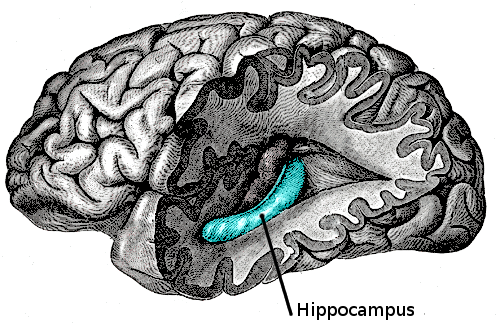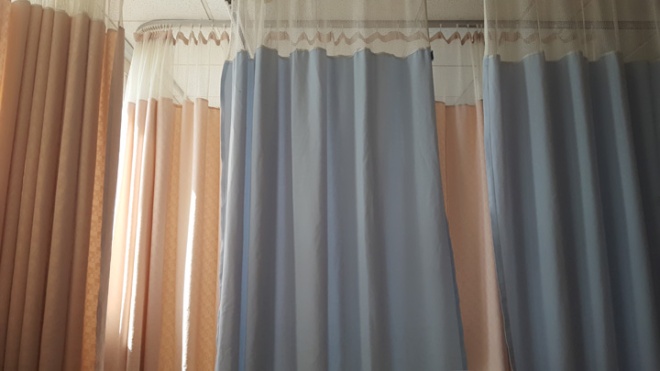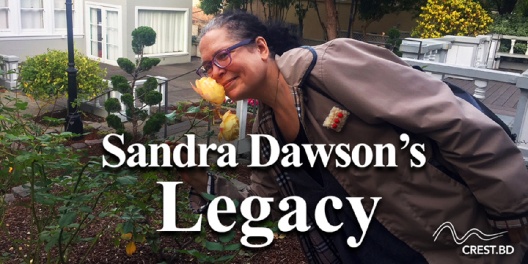
The “complaining is bad for your brain” trope is making the rounds again. In How Complaining Rewires Your Brain For Negativity, Dr. Travis Bradberry (“Author of #1 bestselling book, Emotional Intelligence 2.0, and president of TalentSmart, world’s leading provider of emotional intelligence”) claims:
Repeated complaining rewires your brain to make future complaining more likely. Over time, you find it’s easier to be negative than to be positive, regardless of what’s happening around you. Complaining becomes your default behavior, which changes how people perceive you.
And here’s the kicker: complaining damages other areas of your brain as well. Research from Stanford University has shown that complaining shrinks the hippocampus—an area of the brain that’s critical to problem solving and intelligent thought. Damage to the hippocampus is scary, especially when you consider that it’s one of the primary brain areas destroyed by Alzheimer’s.
What is this compelling research from Stanford? A link to an article in Fast Company, Why Complaining May Be Dangerous To Your Health (1/12/15):
A half hour of complaining every day physically damages a person’s brain, according to research from Stanford University. Whether you’re the one griping or you’re the one listening, exposure to negativity peels back neurons in the hippocampus—the part of the brain used for problem solving and cognitive function. Over time, complaining becomes a habit. If you’re surrounded by complainers, then you’re more likely become one.
The research on “peeling back neurons in the hippocampus” is a link to a non-existent article in iaap-hq.org. Pulling up the extinct page in archive.org yields this gem, Complaining Hurts Your Brain (3/27/14):
Scientific research from Stanford’s medical school revealed that exposure to 30 minutes of negativity every day (including negative news on TV) can physically damage the brain. It damages the neurons in the hippocampus, the part of the brain used for problem solving and cognitive functioning. This is significant because research also shows that in Alzheimer’s disease, the hippocampus is one of the first regions of the brain to suffer damage.
Now let’s look for a study where the participants had their brains scanned, watched 30 minutes of negative news every day for three months, then had their brains scanned again. For good measure, we should assign half of the participants to a control condition, where they are forbidden to watch negative news for three months. Then we can compare hippocampal volumes in the two groups.
You know where this is going. The peeling hippocampus study does not exist. It’s completely fictional.
Further Googling pulls up a 2012 article from the Community Corner section of the Carlsbad Patch, Stress and Negativity May Change Size and Function of the Brain:
Robert Sapolsky is a professor and researcher in the field of stress and the effect it has on health. For the past three decades Sapolsky has been studying how the mind and body handle stress. In an interview with Stanford Report, he said:
“It’s becoming clear that in the hippocampus, the part of the brain most susceptible to stress hormones, you see atrophy in people with post-traumatic stress disorder and major depression. … There’s a ton of very exciting, very contentious work as to whether stress is causing that part of the brain to atrophy, and if so, is it reversible. Or does having a small hippocampus make you more vulnerable to stress-related traumas? There’s evidence for both sides.“
Ah ha, Robert Sapolsky, a famous professor at Stanford. He’s best known for his research on the negative effects of stress in baboons, who generally do not watch TV, neither in the wild nor in captivity. Here’s a 2000 review article on Glucocorticoids and Hippocampal Atrophy in Neuropsychiatric Disorders (cited over 1,000 times):
An extensive literature stretching back decades has shown that prolonged stress or prolonged exposure to glucocorticoids—the adrenal steroids secreted during stress—can have adverse effects on the rodent hippocampus.
Yes indeed, the invasive studies that examine actual neurons in the hippocampus are in rodents.
Sapolsky continues:
More recent findings suggest a similar phenomenon in the human hippocampus associated with many neuropsychiatric disorders. This review examines the evidence for hippocampal atrophy in (1) Cushing syndrome, which is characterized by a pathologic oversecretion of glucocorticoids; (2) episodes of repeated and severe major depression, which is often associated with hypersecretion of glucocorticoids; and (3) posttraumatic stress disorder. Key questions that will be examined include whether the hippocampal atrophy arises from the neuropsychiatric disorder, or precedes and predisposes toward it…
Notice that both here and in his 2007 Stanford News quote above, he questions the direction of causality.
So where did the complaining and negative news come from? The Carlsbad Patch article 1 also linked to Listening to Complainers Is Bad for Your Brain (8/12/12):
Do you hate it when people complain? It turns out there’s a good reason: Listening to too much complaining is bad for your brain in multiple ways, according to Trevor Blake, a serial entrepreneur and author of Three Simple Steps: A Map to Success in Business and Life. In the book, he describes how neuroscientists have learned to measure brain activity when faced with various stimuli, including a long gripe session.
“The brain works more like a muscle than we thought,” Blake says. “So if you’re pinned in a corner for too long listening to someone being negative, you’re more likely to behave that way as well.”
Even worse, being exposed to too much complaining can actually make you dumb. Research shows that exposure to 30 minutes or more of negativity–including viewing such material on TV–actually peels away neurons in the brain’s hippocampus. “That’s the part of your brain you need for problem solving,” he says. “Basically, it turns your brain to mush.”
Ah ha, so we can finally blame serial entrepreneur Trevor Blake, who made up the whole thing. Or at the very least, extrapolated wildly from studies in monkeys and rodents. From Three Simple Steps: A Map to Success in Business and Life:

[so Mr. Blake actually used the more accurate “pruning back” not “peeling back”]
What about complainers? 2

Oh no!! This blog post is increasing the rate of cell death in my hippocampus!
But think about it… reading Donald J. Trump‘s toxic and negative (and horrifying) tweets is raising our anxiety. Does complaining about them make it any worse?
link to HuffPo via Neuroskeptic
Footnotes
1 The Carlsbad Patch article by Rachael Grant Dixon is actually the best of the lot.
2 The unclear origins of this claim were also discussed by the skeptics at Stack Exchange.





















![[no title] 1979-82 by Jenny Holzer born 1950](https://neurocritic.files.wordpress.com/2016/10/rejoice-our-times-are-intolerable.jpg?w=660)
![[no title] 1979-82 by Jenny Holzer born 1950](https://neurocritic.files.wordpress.com/2016/10/fear-is-the-most-elegant-weapon.jpg?w=660)
![[no title] 1979-82 by Jenny Holzer born 1950](https://neurocritic.files.wordpress.com/2016/10/meaningless-platitudes-will-be-pulled-from-tongues-and-minds.jpg?w=660)
![[no title] 1979-82 by Jenny Holzer born 1950](https://neurocritic.files.wordpress.com/2016/10/the-end-of-the-u-s-a.jpg?w=660)
